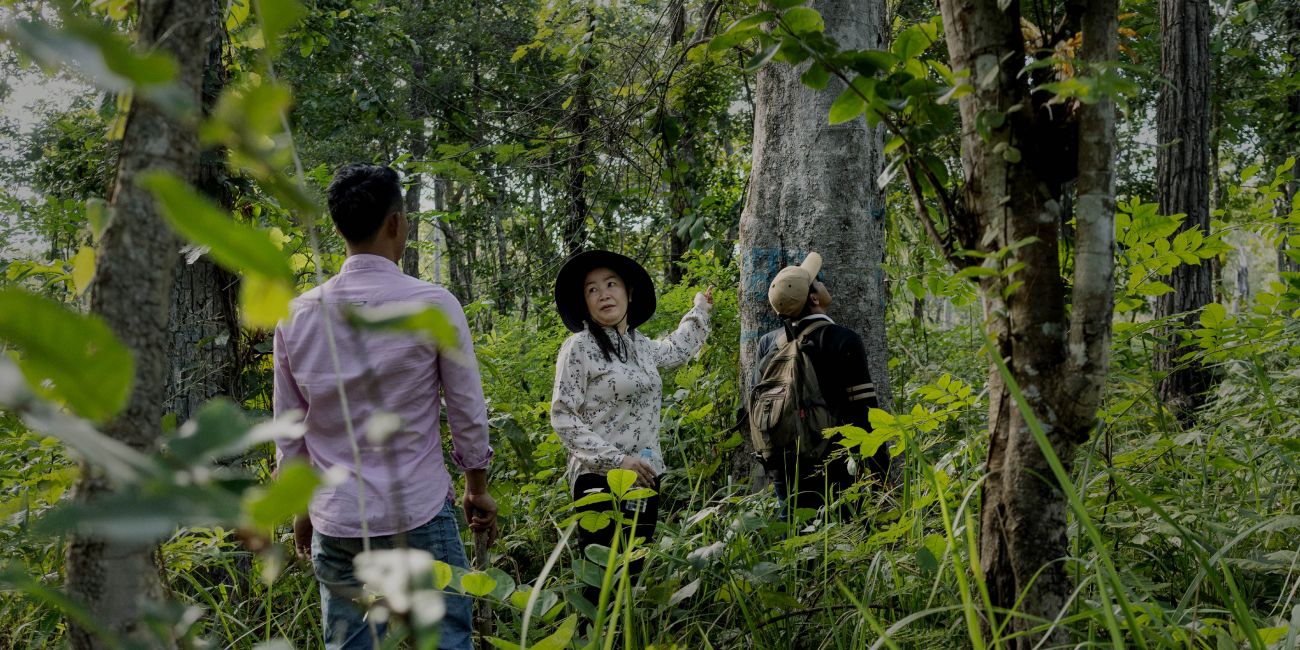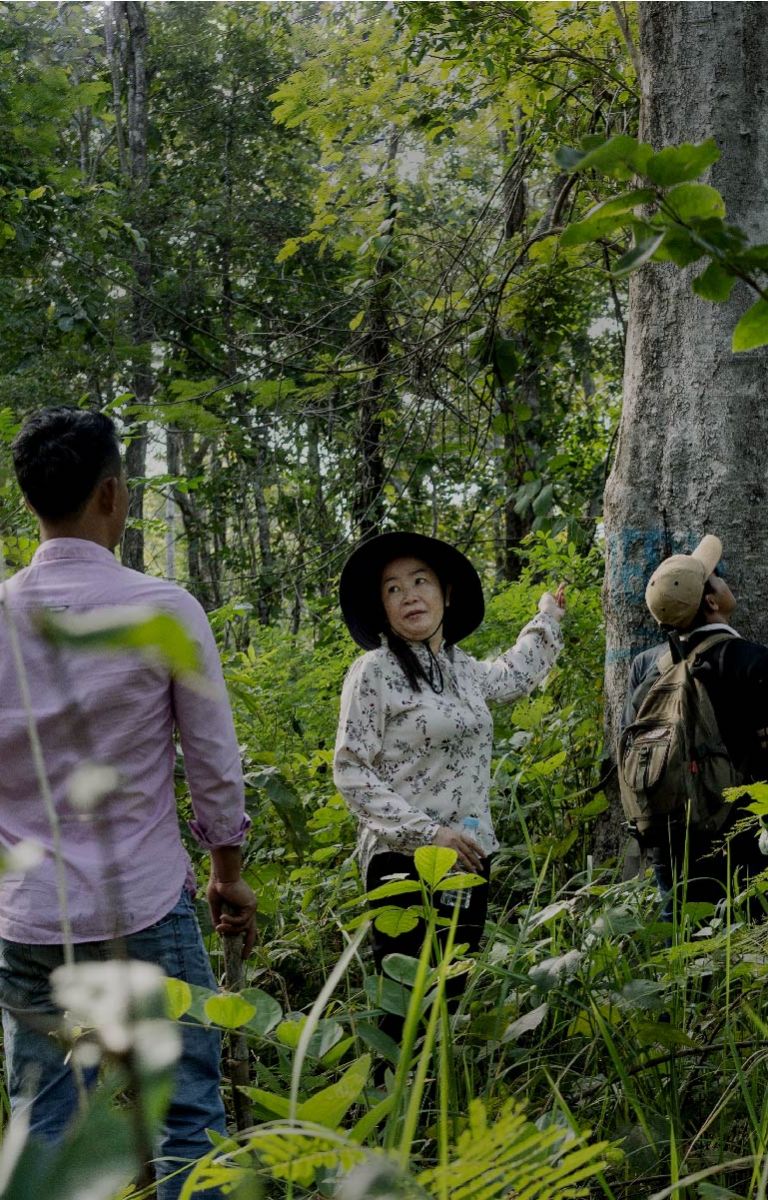

Rising to the challenges of climate change
When the Paris Agreement on Climate Change was signed at the Conference of Parties (COP21) in 2015, countries made serious, voluntary, and globally transparent commitments to reduce their greenhouse gas emissions to avert the worst impacts of climate change. Since then, the need for urgent action has accelerated. At COP26 in Glasgow in 2021, the international community reaffirmed and increased the ambitions to reduce emission levels.
COP26 underscored the need to reduce emissions through nature-based solutions and to place Indigenous Peoples and local communities at the centre of land management and benefit-sharing. The finalization of the Paris Rulebook and agreement on Article 6 have enshrined market-based approaches for carbon trading within the United Nations Framework Convention on Climate Change (UNFCCC). In parallel, voluntary carbon markets have taken off, reaching US$1 billion in transactions for the first time in 2021. In 2021, only 26 percent of the world’s investment to reach these targets went to agriculture, forestry, and other members of the land-use sector.
RECOFTC believes that funding for the land-use sector must be rapidly scaled up to reach the target of 1.5 degrees Celsius. Private sector commitment to achieving the target and investment in the land-use sector is crucial. Companies must take on multiple roles beyond investing in carbon credits. They must both reduce their emissions and ensure the integrity of supply chain commodities associated with deforestation risk. By embracing these roles, companies can strengthen and reinforce crucial regulations and policy directives by national governments for reducing deforestation.
At RECOFTC, we understand the need for urgent and effective action, and we are expanding our support for mitigating and adapting to climate change. While acknowledging the risks associated with market-based mitigation approaches, we see opportunities to strengthen the land rights of Indigenous Peoples through carbon markets and REDD+. We also see opportunities to foster and strengthen sustainable land management.
The 2021 State of Climate Action report says US$5 trillion will be needed every year up to 2030 to finance the systemic transitions required to limit global warming to 1.5 degrees Celsius. This would be an increase from current levels of climate financing by a factor of 13.
RECOFTC believes regulatory frameworks and private sector investments must be engaged in tandem for maximum effectiveness in reducing carbon emissions.
Carbon markets are just one tool. Our toolbox must also include comprehensive policies, recognition of the tenure of Indigenous Peoples and local communities, economic development, and law enforcement. Healthy forests are a crucial source of livelihood and a safety net against climate impacts. Many communities have management plans in place to protect and maintain their forests, but they are unable to effectively implement them because they lack resources. With an increased flow of resources, communities can better manage their forests, ultimately contributing to climate mitigation and enhancing their ability to adapt to climate change.

Recognizing both the potential and the risks of carbon markets, RECOFTC has been developing a pipeline of carbon projects in its priority landscapes in the Asia–Pacific region. We work with companies and other investors and stakeholders as an intermediary on behalf of local communities to ensure that the highest standards of social and ecological safeguards are maintained and that local communities receive a fair share of the benefits flowing from climate finance.
Our carbon projects are built on these fundamental criteria. They must:
- Engage Indigenous Peoples and local communities voluntarily and fully in project design and implementation
- Provide financial and other benefits directly to communities
- Apply high ecological standards to ensure fundamental ecological functions at the landscape level, including biodiversity
- Require high-integrity carbon credits for which the sale is additional to reductions made in a company’s own supply chain
One way in which RECOFTC ensures that its engagement in carbon markets meets the highest social and rights-based standards is through membership as a founding partner in the pioneering Peoples Forest Partnership (PFP). Launched at COP26, the PFP is an equitable partnership among forest communities and the private sector, civil society, and government organizations. It is committed to driving climate finance directly to Indigenous Peoples and local communities.
RECOFTC’s role in carbon markets is much broader than project development. As a community forestry organization, RECOFTC is uniquely positioned to support local people and forest communities in their efforts to sequester carbon, adapt to climate change, reduce deforestation and degradation and restore forest landscapes. In our work on climate change, we also build on and integrate our activities with communities on forest landscape restoration, afforestation, and tree planting. Along the way, we work to build up and strengthen community forestry institutions and capacity, emphasizing gender equality and social inclusion.
Frequently asked questions
Want to know more about RECOFTC’s perspectives and approaches regarding carbon markets? Here are answers to questions we are frequently asked.
What is RECOFTC’s role in carbon markets and REDD+?
Mitigating and adapting to climate change are core areas of RECOFTC’s work, including mitigation of land-based emissions. RECOFTC has focused on building capacity for REDD+ readiness, supporting the development and implementation of good policies, and building civil society networks to improve forest governance. However, as market-based climate finance became an increasingly important contributor to mitigating and adapting to climate change, RECOFTC began developing a pipeline of carbon projects for voluntary carbon markets. RECOFTC is a community intermediary, collaborating with project developers. RECOFTC’s objective is to ensure that sustainable benefits and climate finance flow directly to Indigenous Peoples and local communities.
Private sector interest in developing carbon projects is growing. How can we avoid greenwashing by companies that have no real commitment to reducing carbon emissions?
Many organizations are working to prevent greenwashing and ensure that companies do not trade in carbon while failing to reduce their supply chain emissions. One important intervention is the Science-Based Targets initiative (SBTi), which drives ambitious climate action in the private sector by enabling organizations to set science-based emissions-reduction targets. SBTi launched the Net-Zero Standard which uses a science-based framework to help companies set targets that are consistent with the global push to limit temperature rise to 1.5 degrees Celsius.
Companies that want to claim net-zero emissions can ask to be certified by SBTi. The rules are clear: Companies must reduce their supply chain emissions by a minimum of 90 percent, and the remaining percentage can be offset through purchases on the carbon market. Certification prevents greenwashing by ensuring that emissions are first removed from a company’s supply chain.
RECOFTC encourages voluntary carbon markets and offsets but believes carbon credits and offsets must be additional to reducing carbon emissions.
Does RECOFTC conduct due diligence before engaging with companies?
RECOFTC applies a robust due diligence process to ensure that potential investors comply with our standards for social and environmental safeguards. In addition, all companies must agree to apply RECOFTC’s guidelines for achieving free, prior, and informed consent from Indigenous Peoples and local communities. Through membership in the Peoples Forest Partnership, companies must apply the Partnership’s principles for engaging with Indigenous Peoples and local communities.
How can carbon projects bring benefits to Indigenous Peoples and local communities?
Land-based carbon projects can help to build secure and sustainable livelihoods for remote and impoverished communities. In addition to strengthening and safeguarding ecological integrity, well-designed and implemented carbon projects can advance the role of local stakeholders in governing and managing landscapes. These projects, which should have free, prior, and informed consent, emphasize participatory processes and equitable benefit-sharing. During the economic shocks created by the COVID-19 pandemic, carbon projects have provided important livelihoods and social services to remote communities.
When forest-dependent people do not have secure tenure, can carbon projects lead to restrictions on forest area and uses?
REDD+ projects designed for the sale of Verified Emissions Reductions (VERs) are required to be verified according to a standard. The most common is the Verified Carbon Standard (VCS). This standard has an extensive set of safeguards underpinned by principles that avoid harm to communities and ecosystems. The VCS encourages carbon projects to actively support local communities to strengthen their tenure rights and claims. According to the VCS: “The project proponent shall recognize, respect and support local stakeholders’ property rights and, where feasible, take measures to help secure rights.” In addition to VCS verification, many REDD+ carbon projects are certified by the Climate, Community & Biodiversity Standards (CCB Standards). These standards aim to support land management activities that credibly mitigate global climate change, improve the well-being of local communities while reducing their poverty and conserving biodiversity.
Although risks exist on a case-by-case basis, third-party verification required for projects to be registered helps to ensure that safeguards are in place. It also supports community mobilization to strengthen tenure and management rights.
My country has a domestic market mechanism for carbon trading. But it doesn’t include safeguards. Does RECOFTC engage with this carbon trading mechanism?
RECOFTC advocates for and encourages all countries and partners to ensure that robust safeguards are central to their land-based approaches. Where safeguards do not yet exist and where there are opportunities for local communities to benefit from good land stewardship through climate finance, RECOFTC applies its own standards. These include RECOFTC’s Social and Environmental Principles and the principles of the Peoples Forest Partnership as minimum standards for engagement. Communities, civil society, and other partners can be assured that these represent the gold standard of upholding community rights and participation and are applied to all of RECOFTC’s engagements in carbon project development.
###
RECOFTC's work is made possible with the continuous support of the Swiss Agency for Development and Cooperation (SDC) and the Swedish International Development Cooperation Agency (Sida).
